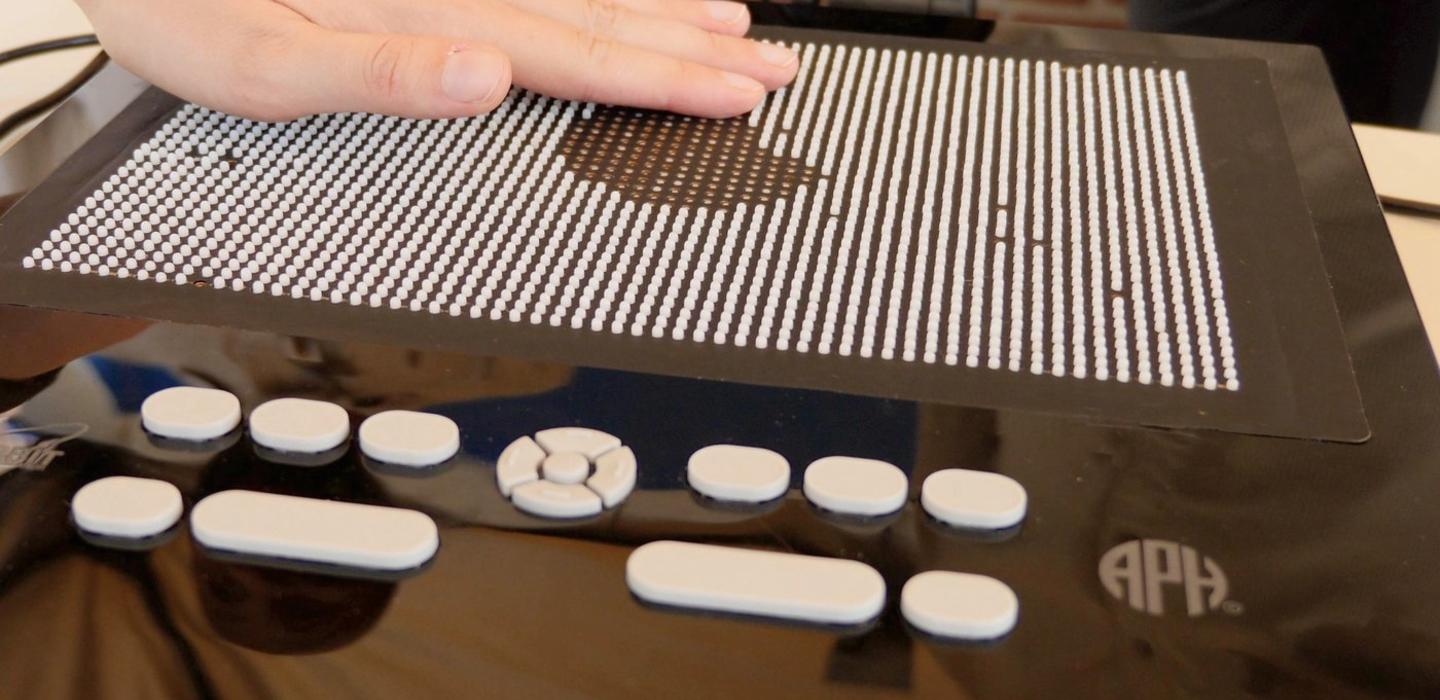Three years ago, Larry Skutchan’s daughter sent him a sonogram of her unborn son.
The director of technology and product research at the American Printing House for the Blind (APH) in Louisville, Kentucky, is blind, but he had a new product in the works that could help him “see” his grandson.
Skutchan took a screenshot of the sonogram from his daughter’s ultrasound, and with the use of Graphiti and his sense of touch, he was able to “see” his tiny grandson’s fingers.
As he recalls, it was “most amazing.”
In August, students from the Kentucky School for the Blind, next door to APH, came across the lawn to see the highly anticipated solar eclipse. Skutchan had a prototype of the machine outside, this time connected to a camera that took a picture of the sun every few seconds. It enabled the students to “watch” the eclipse by touching the image created on the textile pad.
“It’s been the holy grail for forever,” says Skutchan of the new product expected to hit the market this year. “We have put a lot of time and money and energy into making this possible, to get this grid, this array of pins, and to reduce the mechanics to the right size.”
A picture is worth a thousand words and it’s true of a tactile image as well.
With the increased dependency on technology in schools, the lack of access to on-screen graphics can be an impediment to learning for students with visual impairments, he says. Graphiti is a breakthrough, allowing non-visual access to graphical information.
Developed by Orbit Research and Skutchan’s team at the APH, the electronic touch display contains 2,400 (60 by 40) equidistant pins that can be raised and lowered to differing heights. The variable-height pins may depict geometric forms, pie charts, bar graphs, floor plans, line drawings, typography, photos, and more. To change to the next graphic, the pins on the refreshable display move up and down.
The full unit is letter size with a pin display that’s roughly 10 by 6 inches, and it can be used in portrait or landscape orientation. It also features a touch interface, enabling the user to draw on the display. Tracing a shape with a fingertip raises the pins along the path. Users can scroll, zoom, and erase their graphics, and it can save an image drawn by touch to a personal computer.
“One of the things we’re trying to do this year is start producing electronic textbooks with braille and graphics,” says Skutchan. “I don’t think we’ve been able to imagine the potential this has. You can plug it into your computer and it can be the monitor. It’s awesome.”

